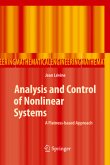This is the first book on a hot topic in the field of control of nonlinear systems. It ranges from mathematical system theory to practical industrial control applications and addresses two fundamental questions in Systems and Control: how to plan the motion of a system and track the corresponding trajectory in presence of perturbations. It emphasizes on structural aspects and in particular on a class of systems called differentially flat.
Part 1 discusses the mathematical theory and part 2 outlines applications of this method in the fields of electric drives (DC motors and linear synchronous motors), magnetic bearings, automotive equipments, cranes, and automatic flight control systems.
The author offers web-based videos illustrating some dynamical aspects and case studies in simulation (Scilab and Matlab).
Part 1 discusses the mathematical theory and part 2 outlines applications of this method in the fields of electric drives (DC motors and linear synchronous motors), magnetic bearings, automotive equipments, cranes, and automatic flight control systems.
The author offers web-based videos illustrating some dynamical aspects and case studies in simulation (Scilab and Matlab).
From the reviews:
"This book is focused mainly on the analysis of so-called nonlinear flat systems. ... The book is published in the mathematical engineering series, and as a consequence the differential geometry content is presented in a very accessible applied mathematics way." (Guy Jumarie, Zentralblatt MATH, Vol. 1167, 2009)
"This book provides an introduction to the theory of deterministic, continuous-time, finite-dimensional, nonlinear control systems from the particular 'differential-algebraic' point of view, with the notion of 'flatness' as the fundamental underlying principle. ... this book is the first extensive treatment of the notion of flatness in monograph form. As such, it is certainly a useful addition to the control-theory literature. A particular strength of the book is its detailed treatment of many examples ... ." (Kevin A. Grasse, Mathematical Reviews, Issue 2011 j)
"This book is focused mainly on the analysis of so-called nonlinear flat systems. ... The book is published in the mathematical engineering series, and as a consequence the differential geometry content is presented in a very accessible applied mathematics way." (Guy Jumarie, Zentralblatt MATH, Vol. 1167, 2009)
"This book provides an introduction to the theory of deterministic, continuous-time, finite-dimensional, nonlinear control systems from the particular 'differential-algebraic' point of view, with the notion of 'flatness' as the fundamental underlying principle. ... this book is the first extensive treatment of the notion of flatness in monograph form. As such, it is certainly a useful addition to the control-theory literature. A particular strength of the book is its detailed treatment of many examples ... ." (Kevin A. Grasse, Mathematical Reviews, Issue 2011 j)








